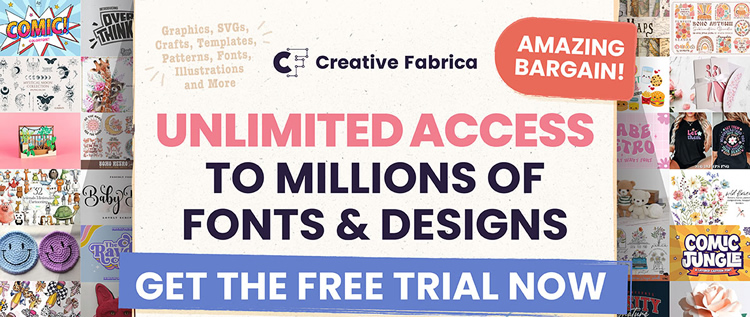What are shop sections on Etsy shop and why are they important?

Etsy Pedia: What are shop sections and why are they important?
Navigating the vast marketplace of Etsy can feel like exploring a bustling bazaar. Amidst the dazzling array of handmade treasures, unique vintage finds, and creative supplies, buyers need a way to quickly find what they’re looking for. This is where your shop sections come in. They are not just organizational tools; they are crucial elements that impact customer experience, search visibility, and ultimately, your sales. Mastering them can transform a cluttered shop into a well-curated, irresistible destination.
This article will delve deep into the world of Etsy shop sections, exploring what they are, why they are an indispensable part of your shop’s success, and how to leverage them for maximum impact. We’ll cover everything from strategic naming to their role in search engine optimization (SEO) and customer navigation.
Table of Contents
- What Exactly Are Etsy Shop Sections?
- The Crucial Importance of Shop Sections for Your Etsy Business
- Enhancing Customer Navigation and User Experience
- Boosting Etsy SEO and Search Visibility
- Improving Shop Organization and Management
- Facilitating Targeted Marketing and Promotions
- Strategic Planning: Crafting Your Perfect Shop Sections
- Step-by-Step Guide to Creating and Managing Shop Sections on Etsy
- Choosing the Right Names for Your Sections
- Organizing Your Listings Within Sections
- Advanced Tips and Pro Strategies
- Leveraging Sections for Seasonal Sales and Promotions
- Using Sections to Highlight Best Sellers and New Arrivals
- The Role of Sections in Your Overall Etsy SEO Strategy
- Frequently Asked Questions About Etsy Shop Sections
What Exactly Are Etsy Shop Sections?
Think of your Etsy shop as a physical store. If you sell clothing, you wouldn’t just pile everything into one big bin. You’d have sections for men’s wear, women’s wear, children’s clothing, accessories, and perhaps even seasonal collections. Etsy shop sections serve the exact same purpose online.
They are custom categories you create within your shop to group similar listings. Instead of presenting buyers with a single, overwhelming list of all your products, sections allow you to break them down into logical, easy-to-browse categories. For instance, if you sell handmade jewelry, you might have sections for “Necklaces,” “Earrings,” “Bracelets,” “Gemstone Jewelry,” and “Personalized Gifts.” This organization is key to a positive customer journey.
The Crucial Importance of Shop Sections for Your Etsy Business
Understanding what shop sections are is the first step. Recognizing their immense importance is what will drive you to implement them effectively. They are far more than just a cosmetic feature; they are powerful tools that can significantly influence your shop’s performance.
Enhancing Customer Navigation and User Experience
Imagine a potential buyer landing on your Etsy shop. If they have a specific item in mind, like a “silver pendant necklace,” they don’t want to scroll through pages of mismatched items to find it. Well-defined shop sections allow customers to quickly navigate to the exact type of product they are interested in.
- Intuitive Browsing: Clear sections make it easy for shoppers to explore your offerings without feeling lost or overwhelmed.
- Reduced Bounce Rate: When customers can find what they need fast, they are more likely to stay on your shop, browse further, and make a purchase.
- Improved Customer Satisfaction: A positive and seamless shopping experience encourages repeat business and good reviews.
Why This Matters: A happy customer is a returning customer, and in the competitive Etsy landscape, providing an exceptional user experience is paramount.
Key Takeaways: Shop sections are your primary tool for guiding customers, making your inventory easily discoverable, and fostering a positive shopping environment.
Boosting Etsy SEO and Search Visibility
Etsy’s search algorithm, like that of Google, prioritizes relevance and user experience. Shop sections play a vital role in both. When you name your sections strategically, you are essentially adding more relevant keywords to your shop.
- Keyword Rich Titles: Using descriptive keywords in your section titles can help your shop rank higher in Etsy searches. For example, a section titled “Handmade Sterling Silver Earrings” is more descriptive and keyword-rich than a generic “Jewelry.”
- Internal Linking: Etsy uses the structure of your shop, including sections, to understand the relationships between your listings. This internal linking helps search engines better crawl and index your shop.
- Discoverability: Buyers often use the search bar to find specific categories. If your section titles match their search queries, you increase the chances of them discovering your shop.
Pro Tip: Consider using long-tail keywords in your section titles. These are more specific phrases that buyers might use to find niche items. For instance, instead of just “Candles,” try “Soy Wax Scented Candles” or “Hand-Poured Lavender Aromatherapy Candles.” This is a key element of effective Etsy Shop Management.
Key Takeaways: Strategic section naming directly contributes to your shop’s SEO, making it more discoverable within Etsy’s search results.
Improving Shop Organization and Management
Beyond customer-facing benefits, shop sections are invaluable for your own operational efficiency.
- Streamlined Listing Management: When you have a large inventory, keeping track of everything can be a challenge. Sections make it easier to add new listings to the correct categories and to locate existing ones.
- Inventory Analysis: By grouping similar items, you can more easily analyze which types of products are selling best, informing your inventory and product development decisions.
- Preparation for Promotions: Sections make it simpler to create targeted sales or promotions on specific product lines, which can be very effective during holidays or special events.
Key Takeaways: Well-organized sections save you time, provide valuable insights into your sales performance, and simplify promotional efforts.
Facilitating Targeted Marketing and Promotions
Shop sections provide a framework for your marketing efforts, both on and off Etsy.
- Directing Traffic: When promoting your shop on social media or through email marketing, you can link directly to specific sections. For example, “Shop our new collection of [Section Name] here!” This guides potential customers precisely where you want them to go.
- Seasonal Campaigns: During holidays like Christmas, Valentine’s Day, or Mother’s Day, you can create specific sections for “Holiday Gifts” or “Valentine’s Day Collections.” This makes it easy for shoppers looking for seasonal items to find them. This is also covered in our guides on Holidays and Promotions.
- Highlighting Product Lines: If you introduce a new type of product, you can create a dedicated section for it, drawing attention to your latest offerings.
Key Takeaways: Sections act as landing pages for your marketing efforts, allowing you to guide interested buyers to relevant product groups efficiently.
Strategic Planning: Crafting Your Perfect Shop Sections
Simply creating sections isn’t enough. The real power lies in thoughtful planning and strategic implementation. This involves understanding your product catalog and your target audience’s shopping habits.
Step-by-Step Guide to Creating and Managing Shop Sections on Etsy
Here’s how to get started with creating and managing your shop sections directly on the Etsy platform.
- Log in to your Etsy account and navigate to your Shop Manager.
- Click on “Listings” in the left-hand menu.
- On the Listings page, you’ll see a “Shop Sections” panel on the left side.
- Click “Add Section.”
- Enter a Section Name: Type in the name for your new section.
- Click “Save.”
- Repeat for each section you want to create.
- To move listings: Go to your “Listings” page, select the listings you want to move, and then use the “Move to section” dropdown menu at the top.
- To reorder sections: On the “Shop Sections” panel, click and drag the sections to your desired order.
- To edit or delete a section: Hover over the section name in the “Shop Sections” panel. You’ll see options to edit or delete it.
Internal Link: For more in-depth guidance on managing your shop’s backend, explore our comprehensive category on Etsy Shop Management.
Choosing the Right Names for Your Sections
This is where the magic happens. Your section names are your primary tool for descriptive organization and SEO.
- Be Descriptive: Use words that accurately describe the items within the section.
- Use Keywords: Integrate relevant keywords that customers would use to search for these items.
- Keep it Concise: Aim for clear, brief titles that are easy to read.
- Think Like a Buyer: What terms would you use to find these items if you were browsing?
- Consider Product Types: Group items by their nature (e.g., “Wall Art,” “Ceramic Mugs,” “Leather Wallets”).
- Consider Materials: If materials are a key selling point, use them (e.g., “Sterling Silver Jewelry,” “100% Cotton T-shirts”).
- Consider Usage/Occasion: (e.g., “Wedding Invitations,” “Baby Shower Decor,” “Birthday Gifts”).
- Consider Style: (e.g., “Minimalist Home Decor,” “Bohemian Style Scarves”).
Example:
Instead of:
- Section 1: Things
- Section 2: More Things
- Section 3: Other Stuff
Try:
- Wall Prints & Posters
- Handmade Ceramic Mugs
- Personalized Leather Wallets
Affiliate Link Suggestion: If you’re struggling with keyword research or identifying what buyers are searching for, tools like ETShop.ai or EverBee can be incredibly helpful for uncovering popular search terms and competitor strategies.
Organizing Your Listings Within Sections
Once your sections are named, diligently assign each listing to the most appropriate section.
- One Listing, One Primary Section: While a listing might fit into multiple categories conceptually, for clarity and SEO, assign it to the single most relevant section.
- Avoid Overcrowding: If a section ends up with hundreds of listings, it might be too broad. Consider breaking it down further.
- Keep it Consistent: Ensure that items within a section truly belong together.
- Review Regularly: As your shop grows and evolves, revisit your sections to ensure they remain relevant and optimized.
Why This Matters: A well-organized shop feels professional and trustworthy, encouraging buyers to spend more time exploring and making purchasing decisions.
Key Takeaways: Thoughtful naming and precise listing assignment are critical for maximizing the effectiveness of your shop sections.
Advanced Tips and Pro Strategies
Now that you have a solid understanding of the fundamentals, let’s explore some advanced strategies to truly leverage your Etsy shop sections for maximum impact.
Leveraging Sections for Seasonal Sales and Promotions
Shop sections are your secret weapon for seasonal selling.
- Holiday Collections: Create sections like “Christmas Decorations,” “Halloween Party Supplies,” or “Easter Baskets.” This immediately tells shoppers you cater to their seasonal needs. You can add items to these sections weeks in advance to capture early shoppers.
- Themed Sales: Run a “Back to School” sale and have a dedicated “School Supplies” section. Or a “Summer Vibes” promotion with a “Beach Accessories” section.
- New Year, New You: Launch a “New Year Wellness” section with journals, planners, or self-care items.
Internal Link: For more ideas on planning and executing successful seasonal campaigns, check out our category on Holidays and Promotions.
Using Sections to Highlight Best Sellers and New Arrivals
Make it easy for buyers to discover your most popular and newest items.
- “Best Sellers” Section: Regularly update this section with your top-performing items. This acts as social proof and guides new buyers to your most loved products.
- “New Arrivals” Section: Dedicate a space for your latest creations. This encourages repeat visitors to see what’s fresh and exciting in your shop.
- “Gifts Under $X” Section: If you have a range of items at various price points, create gift-specific sections for different budgets, such as “Gifts Under $25” or “Luxury Gifts.”
Product Suggestion: To help you create eye-catching visuals for your sections and listings, consider using Etsy shop templates or our Canva Crash Course for Etsy Sellers.
The Role of Sections in Your Overall Etsy SEO Strategy
Remember, sections are a part of your broader SEO strategy.
- Internal Linking Power: Etsy’s algorithm sees your sections as a way to link related products together. This creates a stronger network of related content within your shop, which search engines love.
- Keyword Reinforcement: The keywords used in your section titles reinforce the keywords used in your listing titles and tags. This creates a consistent keyword theme, signaling to Etsy exactly what your shop and its products are about.
- User Engagement Signals: When customers can easily find what they want and stay longer in your shop, this signals to Etsy that your shop provides a good user experience, which can positively impact your search rankings.
External Link: For more on optimizing your Etsy shop’s visibility, refer to the official Etsy Help Center’s guide on Search Basics.
Key Takeaways: Sections are not isolated features; they are integral components of your Etsy SEO, contributing to discoverability and user engagement.
Frequently Asked Questions About Etsy Shop Sections
Q1: How many shop sections can I create on Etsy?
A1: Etsy allows you to create up to 20 shop sections. It’s generally recommended to use a strategic number that effectively categorizes your products without overwhelming your customers.
Q2: Can I change the order of my shop sections?
A2: Yes, you can easily reorder your shop sections by clicking and dragging them into your preferred arrangement in your Shop Manager. It’s advisable to place your most important or popular sections at the top.
Q3: What happens if a section has no listings?
A3: If a section has no listings, it will simply not appear to buyers on your shop page. You can safely leave it empty or delete it if it’s no longer needed.
Q4: Should I use the same keywords in my section titles as in my listing titles?
A4: It’s beneficial to use related keywords. Your section titles should be more general descriptions of the product type, while your listing titles can be more specific. For instance, a section named “Handmade Scarves” might contain listings with titles like “Cozy Knit Wool Scarf for Winter” or “Lightweight Silk Evening Scarf.” This provides a good balance for Etsy search.
Q5: How do shop sections impact my shop’s appearance on mobile devices?
A5: Etsy’s mobile interface is designed to be responsive. Your shop sections will be displayed clearly, often in a collapsible menu or a dedicated navigation area, ensuring that mobile shoppers can also easily browse your categories.
Conclusion
Mastering Etsy shop sections is not an option, it’s a necessity for any serious Etsy seller. They are the backbone of a well-organized, customer-friendly, and search-engine-optimized shop. By thoughtfully naming your sections, strategically organizing your listings, and leveraging them for promotions, you can significantly enhance the shopping experience for your customers, boost your shop’s visibility, and ultimately drive more sales.
Don’t underestimate the power of clear organization. Take the time to refine your shop sections, and you’ll be well on your way to building a thriving Etsy business.
Ready to take your Etsy shop management to the next level? We offer comprehensive solutions, including our Etsy Store Audit Service and a valuable Premium SEO Guide to help you optimize every aspect of your shop, including your sections.
What are your favorite strategies for using shop sections? Share your tips and questions in the comments below!
General Link to All Categories: Explore more resources on Etsy Seller Hub
Specific Category Link: Learn more about Etsy Shop Management
New to Etsy? Get started with 40 free listings using our Etsy Referral Link.
Looking for design assets? Discover a vast library of free fonts, SVGs, and graphic designs with commercial use at Creative Fabrica.




